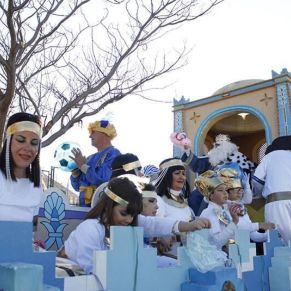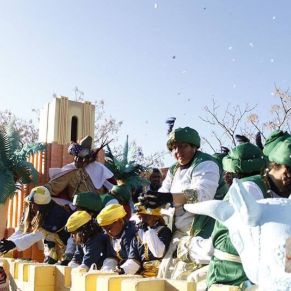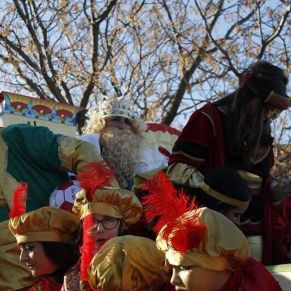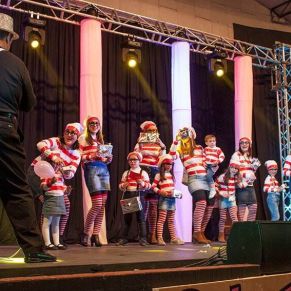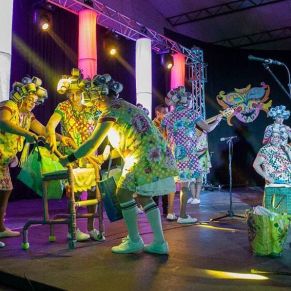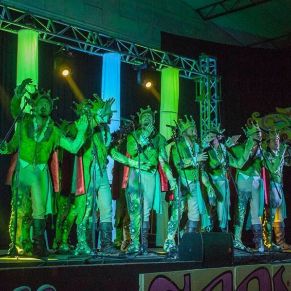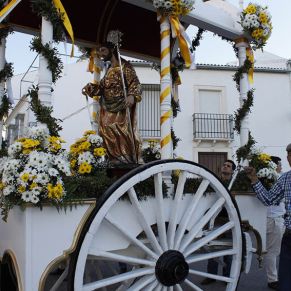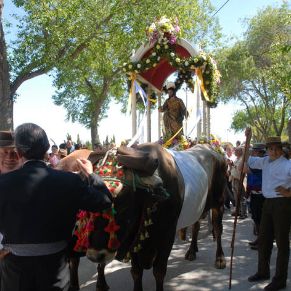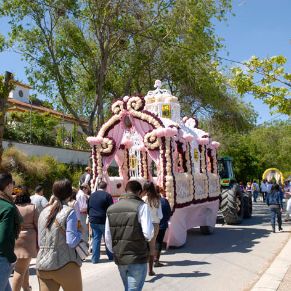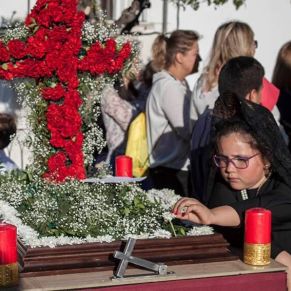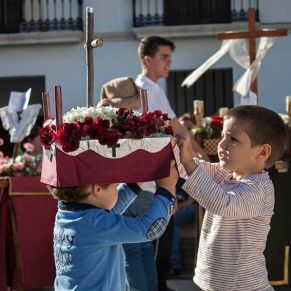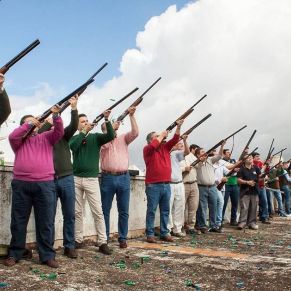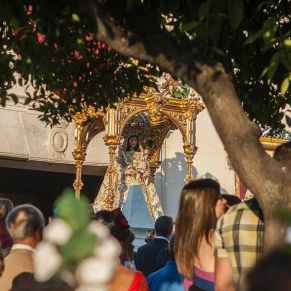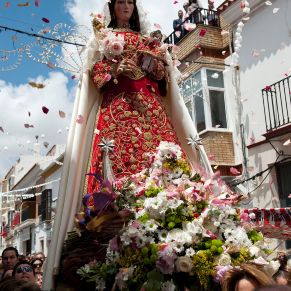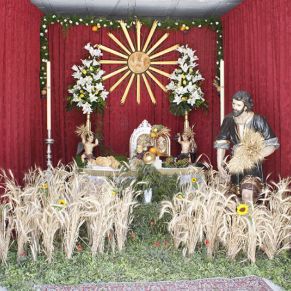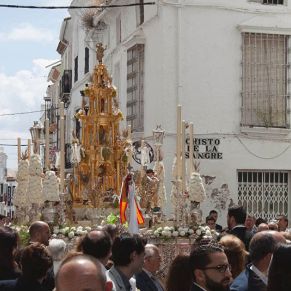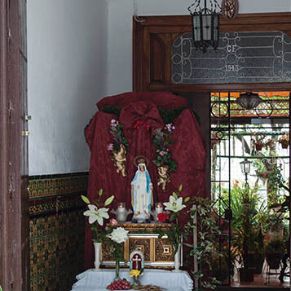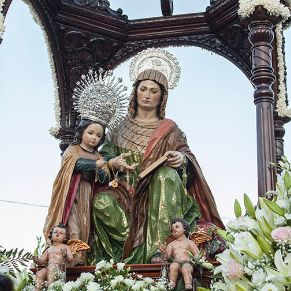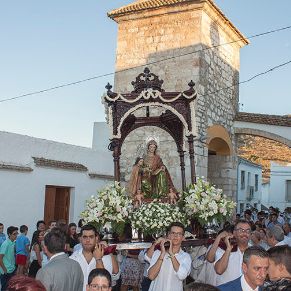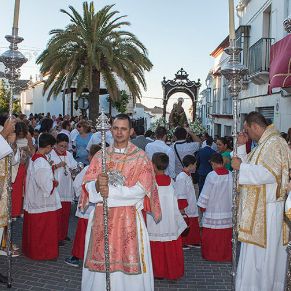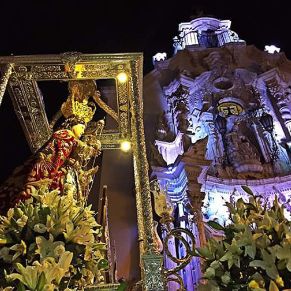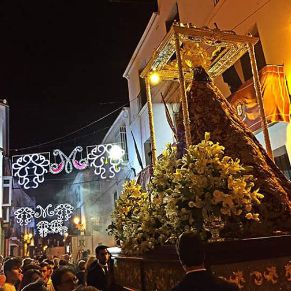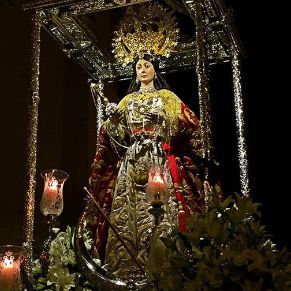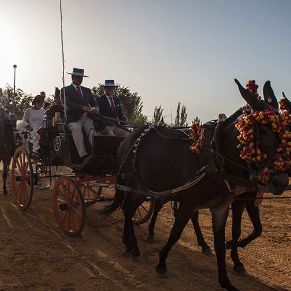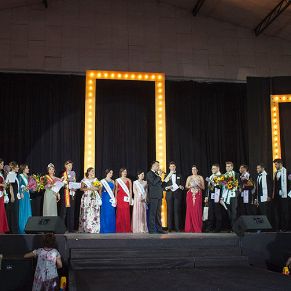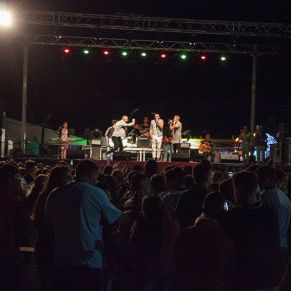Events and Celebrations
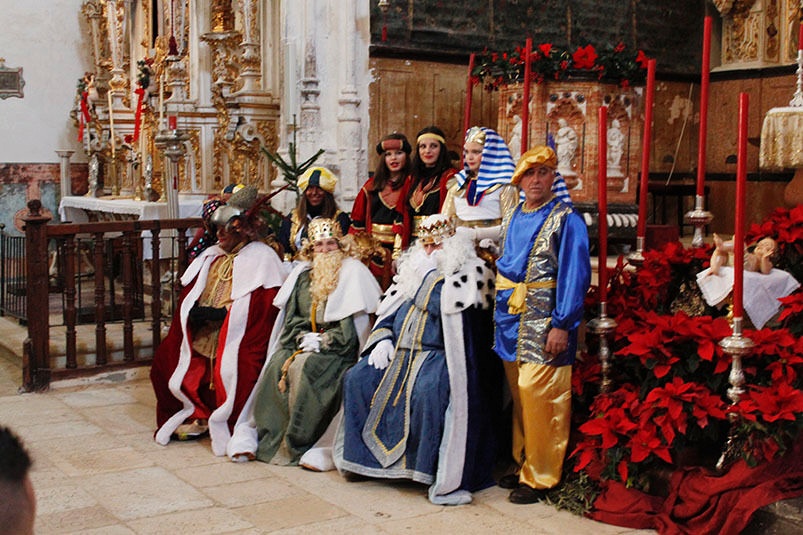
The 5th of January is a magical day for the children of Estepa. In the morning, the Three Wise Men, or Reyes Magos as we call them, visit the town hall, where the mayor hands them the key to the town. Then, they walk around the charming streets in the old town. On their way, they visit the Hermanas de la Cruz Convent as well the organisation aimed to help people with rare diseases “ASEMI”. The Three Wise Men continue their journey around the town by car so that they can be well rested for a magical event at 5pm. At that time, the joyful parade of the Three Wise Men begins. Both children and adults enjoy this magical environment filled with excitement.

Candlemas, or La Canderlaria as we call it, is a Christian celebration that takes place on the 2nd of February. It commemorates the moment when Mary and Joseph took baby Jesus to the Temple in Jerusalem forty days after his birth to complete Mary's ritual of Purification. Its name comes from the candles that the worshippers used to bring during the Christian processions.
In Estepa, we celebrate it by meeting in the evening around massive bonfires located all around the streets of our town to share different kinds of food and drinks. Of course, everyone is welcome to enjoy late-night conversations by the warmth of the fire. All in all, it is a unique experience.
Saint Blaise’s Day, or Día de San Blas as we call it, is a unique event that takes place on the 3rd of February. It was first celebrated at the end of the 19th century in La Victoria Church, where the statue of San Blas (Saint Blaise) was kept. Many people take their freshly baked roscas and hornazos bread to get them blessed in one of the churches in our town. As a tradition, children also wear Saint Blaise’s ribbon, which consists of a coloured ribbon with the catholic medal of Saint Blaise hanging from it.
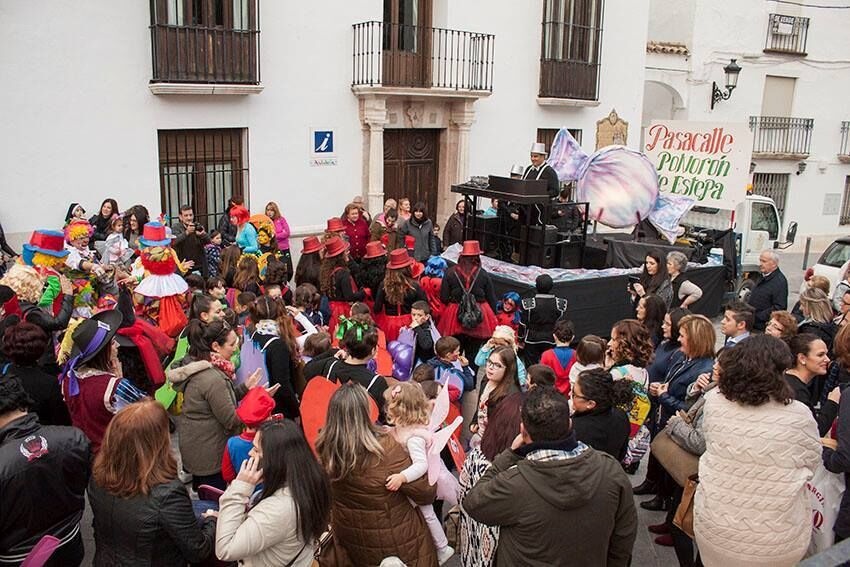
Although the carnival takes place on a different date of February each year, it is always celebrated on a Saturday.
The band El pasacalles del Polvorón kick-starts the carnival playing instruments along the streets. It departs from El Carmen square. Everyone who wears a costume is more than welcome to join in! After this, the party continues at the Caseta Municipal Paco Gandía, a huge facility where several kinds of leisure activities take place, for instance: a costume contest (for all ages as well as for groups); a chirigota performance, with traditional satiric songs from the carnival; entertainment for children, and different music shows.
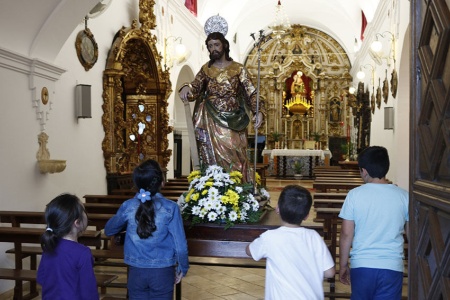
Celebrated on the 1st of May, the Romería de San José Obrero consists of a religious pilgrimage devoted to Saint Joseph the Worker that starts at 9am with a mass for the pilgrims at the Santa Ana Church. As soon as the mass finishes, they carry the sculpture of San José Obrero (Saint Joseph the Worker) out of the church and all the way to the San José Obrero chapel, which is located in the beautiful natural preserve of the Manantial de Roya spring. Carriages pulled by oxes also make their way to the chapel along with the religious pilgrims, who spend most of their time playing happy songs with their flutes and drums, as well as the horse riders whose horses are well dressed for the occasion.
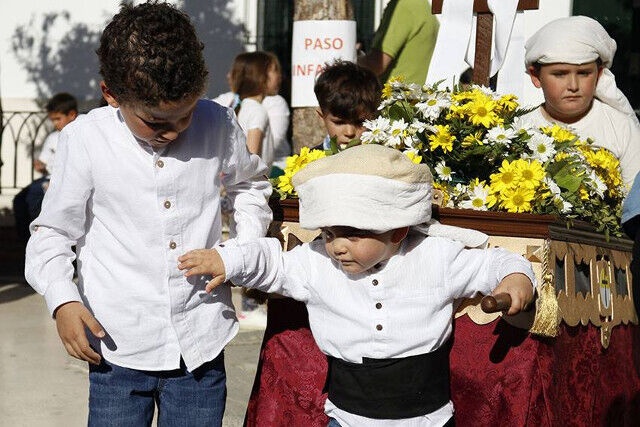
On the 3rd of May boys and girls run around the streets of Estepa carrying their own little Holy Crosses. They knock on every door excited to show everyone their unique creations. Some people even give them a coin or two as a sign of their admiration.
The festival itself begins at around 5pm in El Carmen Square, also known by the locals as El Salón (the living-room). It is a contest in which groups of children and young people come together with their holy crosses, which they have previously decorated with many colours and even flowers. Every year more people join in to celebrate the May Crosses Festival!

La Octava de los Remedios is a traditional religious celebration that takes place on the third Sunday of May. It is celebrated to commemorate the eight days of prayer to the Virgen de los Remedios (Our Lady of the Remedios), a Virgin with great devotion among the people in Estepa. The Remedios neighbourhood dresses up and prepares itself to offer its neighbours and visitors plenty of fun activities. The Tiros en la calle Roya begins the previous Friday at 12pm. It is a tradition that consists of shooting gunshots in the air with pellet guns and it commemorates the shots that the bandits used to shoot many years ago when they were arriving in Estepa. This used to announce the first day of la novena (the day before the celebration) and, therefore, the countdown to the neighbourhood’s big celebration. This tradition was re-taken a few years ago and was previously called Tiros en honor a la Virgen (gunshots honouring the Virgin).
On the third Sunday of May, the sculpture of La Virgen de los Remedios (Our Lady of the Remedios) is carried around the streets of Estepa. Its arrival back to Nuestra Señora de los Remedios Church at around midnight is celebrated with spectacular fireworks. The following Monday is a bank holiday in Estepa, as the subida takes place. This is a major event in the celebration of the Octava de los Remedios during which the sculpture of La Virgen de los Remedios is carried to its Camarín, a small chapel behind the altar in the church. From 12am to 12.30am, a group of women carry the image of the Virgin around the church and Los Remedios Square. At 12.30am they take the sculpture from the altar and put it into the small chapel behind it with the help of a ramp. This is an exciting and moving event for the people of Estepa. While some lift the sculpture of the Virgin, the rest of the crowd admire its beauty and play traditional music (pasodobles and sevillanas).
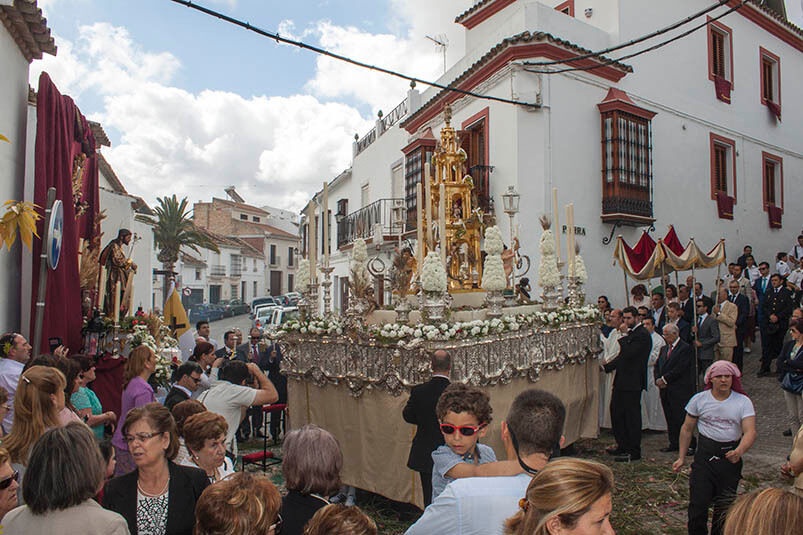
The Christian church commemorates the ceremony of the Eucharist by celebrating Corpus Christi. This celebration takes place sixty days after Palm Sunday, so the exact date varies from year to year. Even though it has always been celebrated on a Thursday, a couple of years ago, the church’s new rules stated that it would take place on a Sunday instead, so later on that same week.
In Estepa we celebrate Corpus Christi on Sunday morning by carrying the holy monstrance in a procession around the town. The children who have received their First Communion that same year walk this route along with the holy monstrance. For the last couple of years, we have even been decorating our houses too, building altars in our balconies and hallways.
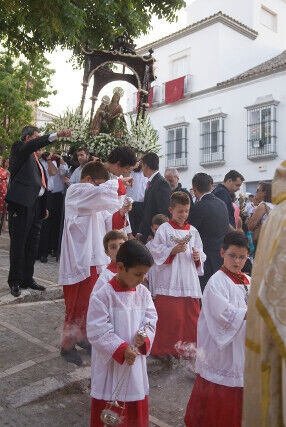
The Velá de Santa Ana is celebrated between the 26th of July and the following weekend in honour of Saint Anne’s feast day. It takes place in the Santa Ana neighbourhood, where they prepare the funfair rides, the musical performances, the traditional tents called casetas and much more. The celebration begins on Friday, when the Hermandad de Santa Ana religious brotherhood organises several games for the children.
On Sunday the sculpture of Nuestra Señora Santa Ana (Our Lady of Saint Anne) is carried out of the Santa Ana Church at 8:30pm and along the streets. The whole platform which it stands on is beautifully decorated with jasmine flowers. A big series of fireworks close this celebration at 12:30am, once the sculpture of Saint Anne is carried back into the church.

The Virgen de la Asunción (Our Lady of the Assumption) is the patron saint of Estepa and this celebration honours the Christian Assumption of the Virgin. To commemorate it, its religious sculpture is carried out from La Asunción Church at 8:30pm on the 15th of August and along the main streets of the town.
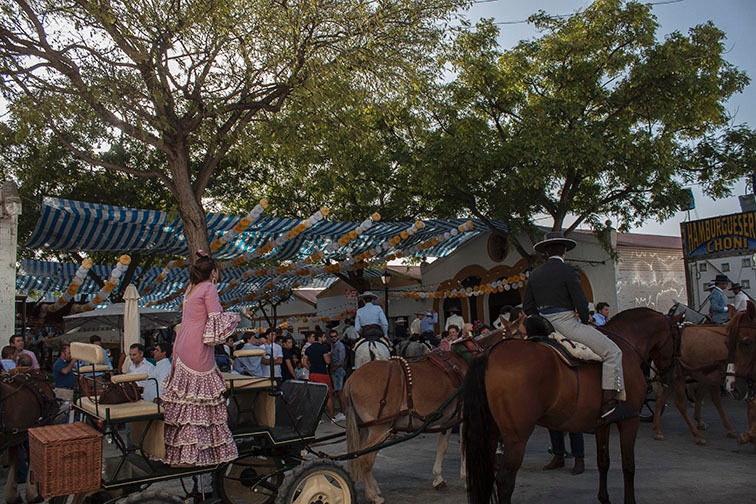
The Feria de Estepa is a very typical kind of Andalusian fair currently celebrated during the first weekend of September. It begins on Friday at 10pm, when they light up the so-called Recinto Ferial where the Feria takes place. In the Feria both children and adults can enjoy the rides that the local call cacharritos, as well as the numerous casetas. These are beautifully decorated tents with traditional colourful ornaments and everyone is welcome inside to enjoy a drink, meal or even a dance. There are also plenty of shows and events in the caseta municipal (the main tent), like the announcement of the King and Queen of the Feria, an event in which many people take part. On Saturday you can also enjoy the open-air horse exhibition right by the caseta municipal.
This religious festivity is celebrated on the 12th of September, the same day that the Christians celebrate the Feast of the Most Holy Name of the Blessed Virgin Mary. To honour her, the sculpture of La Virgen del Carmen (Our Lady of Mount Carmel) is carried out from Nuestra Señora del Carmen Church at 8pm and along the streets of Estepa. On its journey, it is brought to the Puente Street and El Carmen Square, where everyone lights their flares to create a unique scene.
